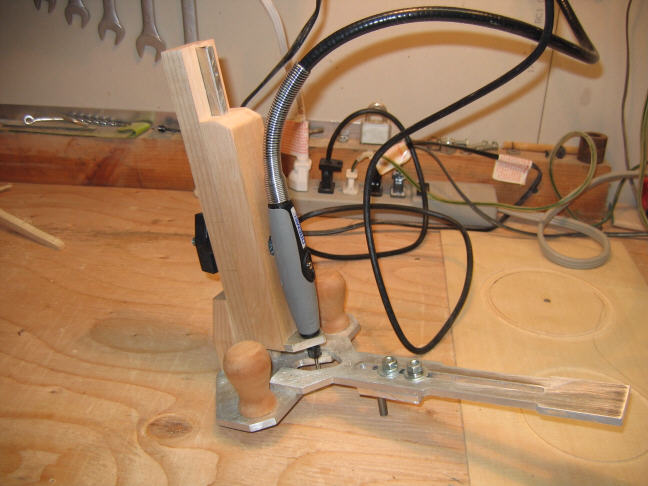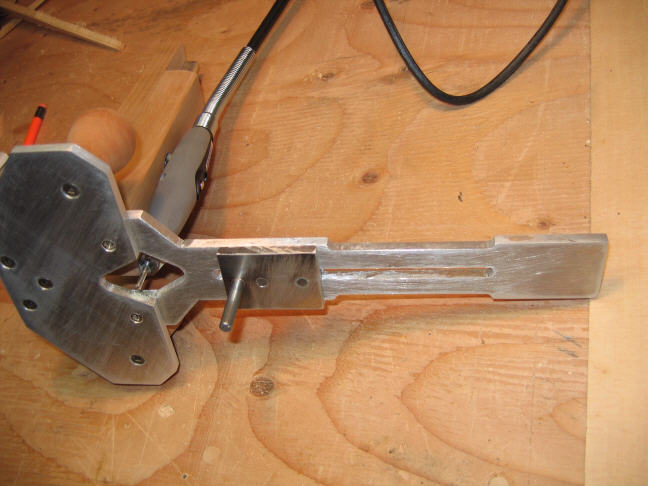Well, tomorrow I am going to try my hand at routing a channel for a rosette. This time I'm going to try it for the first time on a scap piece of spruce.
I'm using the Sloane jig from StewMac and my trusted friend
"Dopie". Dopie is my friend...Dopie the Dremel.
Can you guys please give me some pre-procedure advice before I go for it??
I sure would appreciate your help!
Thanks, WalterK



